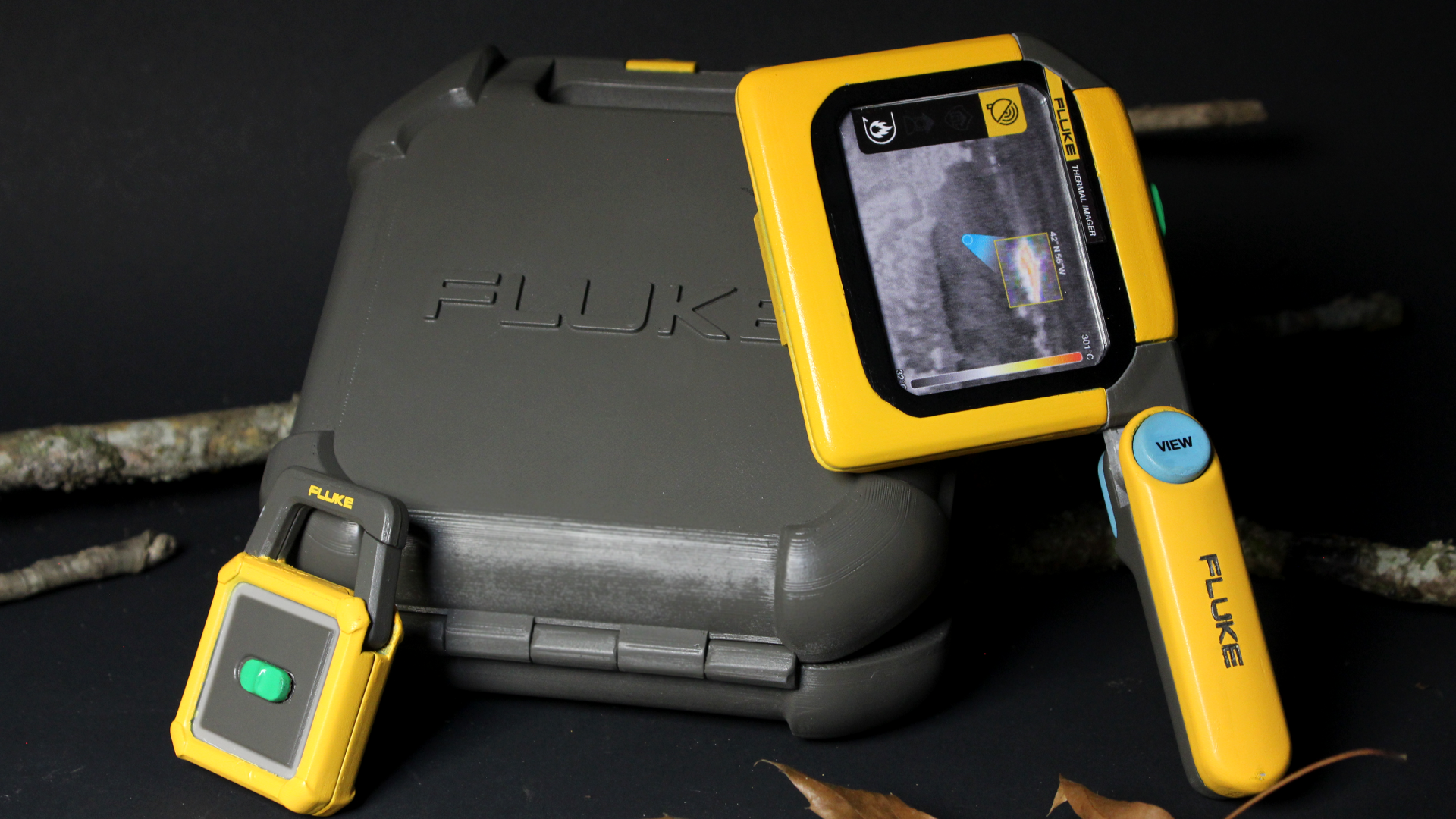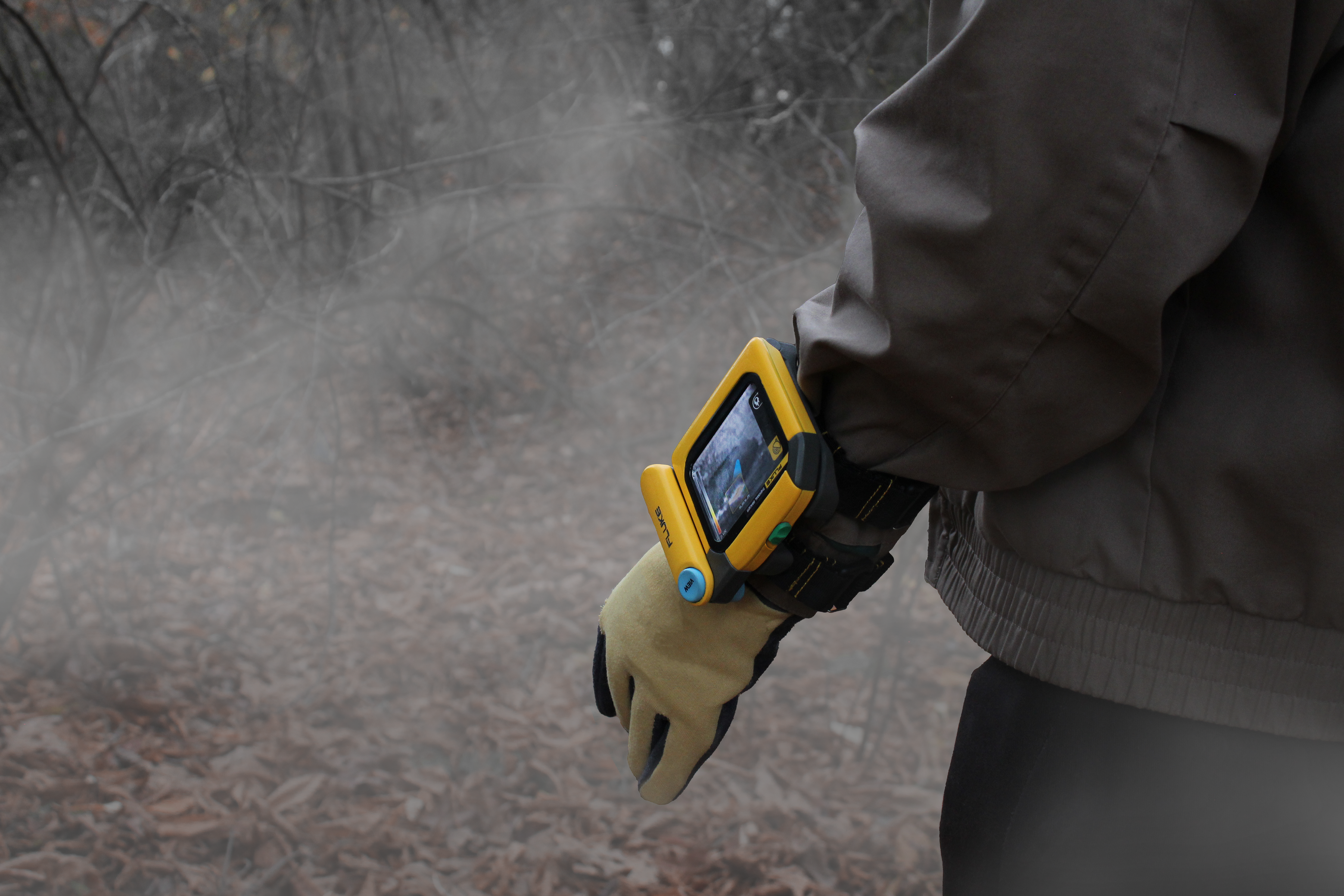
FLUKE TWIG
We were tasked by Fluke to design a tool for the future using their technology and branding. My group of three was very interested in Fluke’s thermal imaging technology, and after some research, we saw applications to wildland firefighting.
Over 10 weeks, we designed TWIG — the Thermal Wildfire Imaging Gadget — a thermal imaging camera that integrates with pre-existing communication systems to improve coordination, situational awareness, and safety for forest firefighting crews, utilizing real-time data and advanced technology.
Duration
10 weeks
October–December 2024
10 weeks
October–December 2024
Tools
High Fid. Prototyping
3D Printing
Solidworks
Rhino
Keyshot
UI Design
High Fid. Prototyping
3D Printing
Solidworks
Rhino
Keyshot
UI Design
Team
Ethan Del Rosario
Iris Eden Sizemore
Ethan Del Rosario
Iris Eden Sizemore

RESEARCH
What problem are we solving?WHY WILDLAND FIREFIGHTING?
Forest firefighting crews face challenges with situational awareness and coordination, highlighting a need for technology that enhances safety and efficiency.
Currently, thermal imaging cameras (TICs) are used by drones to help the command center make better decisions, but the communication with crews is purely verbal and instructions can be unclear. This leads to delays and potential dangers.
CURRENT SOLUTIONS
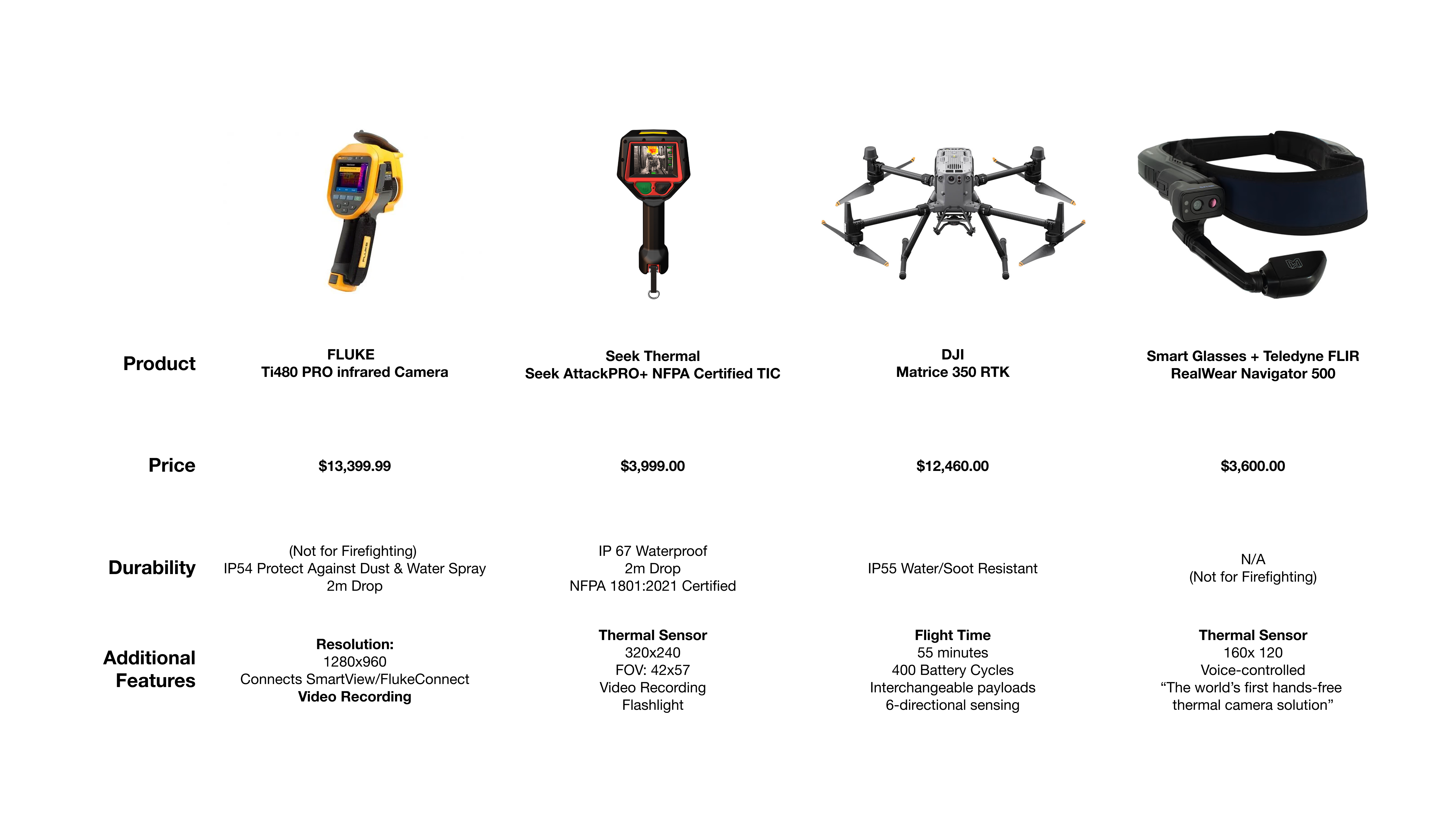
USER
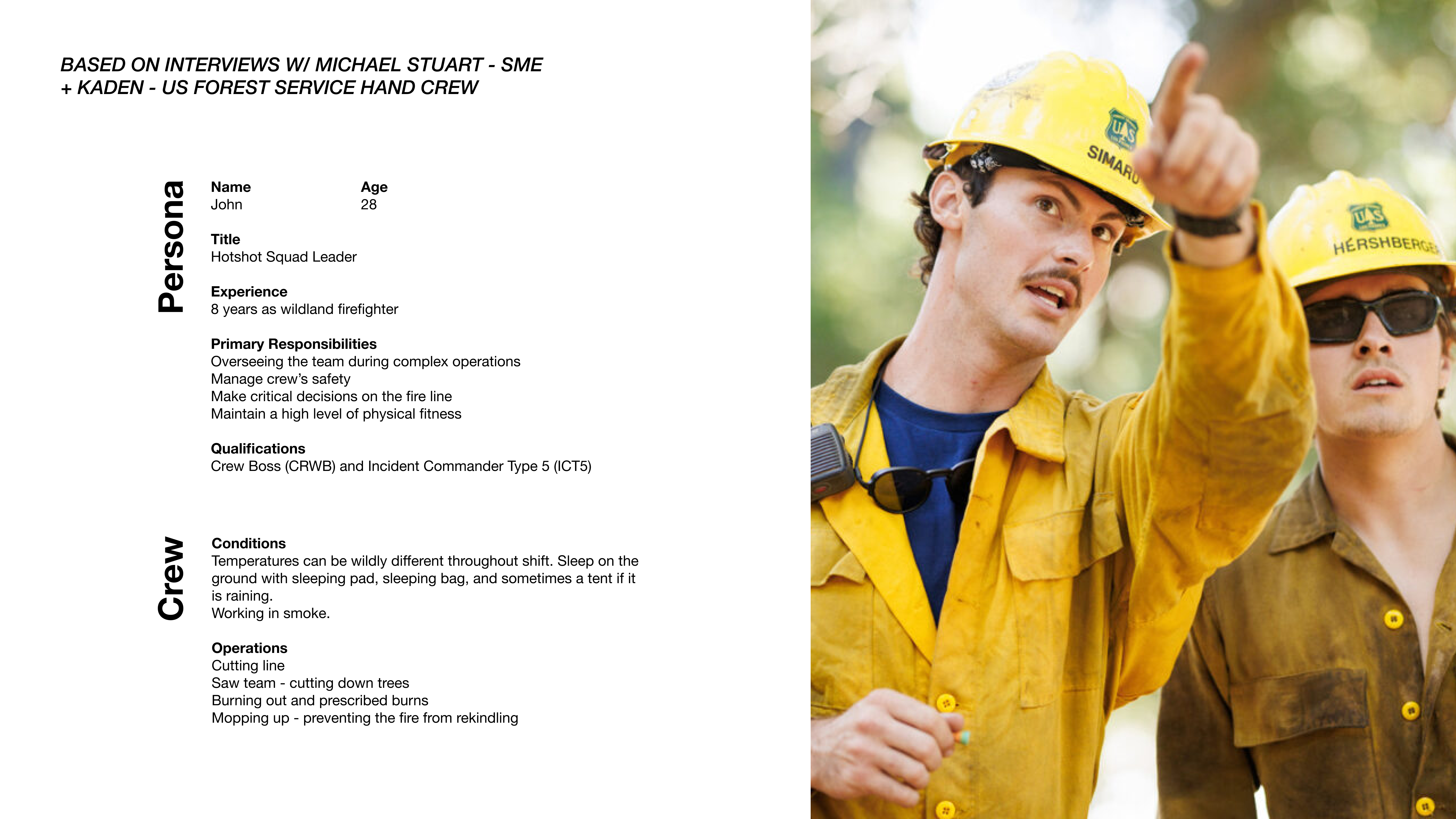
SYSTEM DIAGRAM

GOAL + CRITERIA

IDEATION
What are we designing to solve this problem?R1 CONCEPTS

R2 CONCEPTS
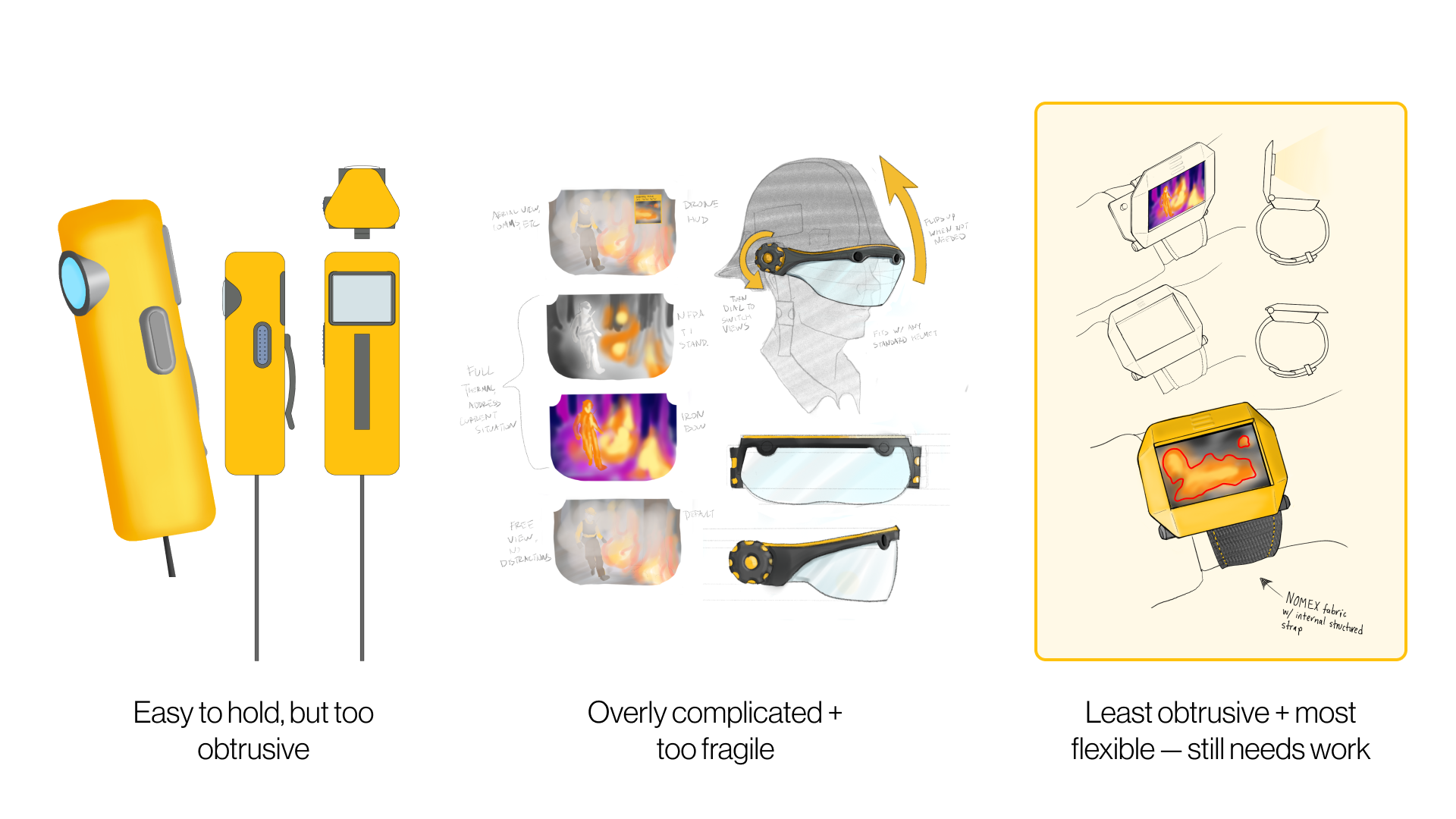
R3 CONCEPTS
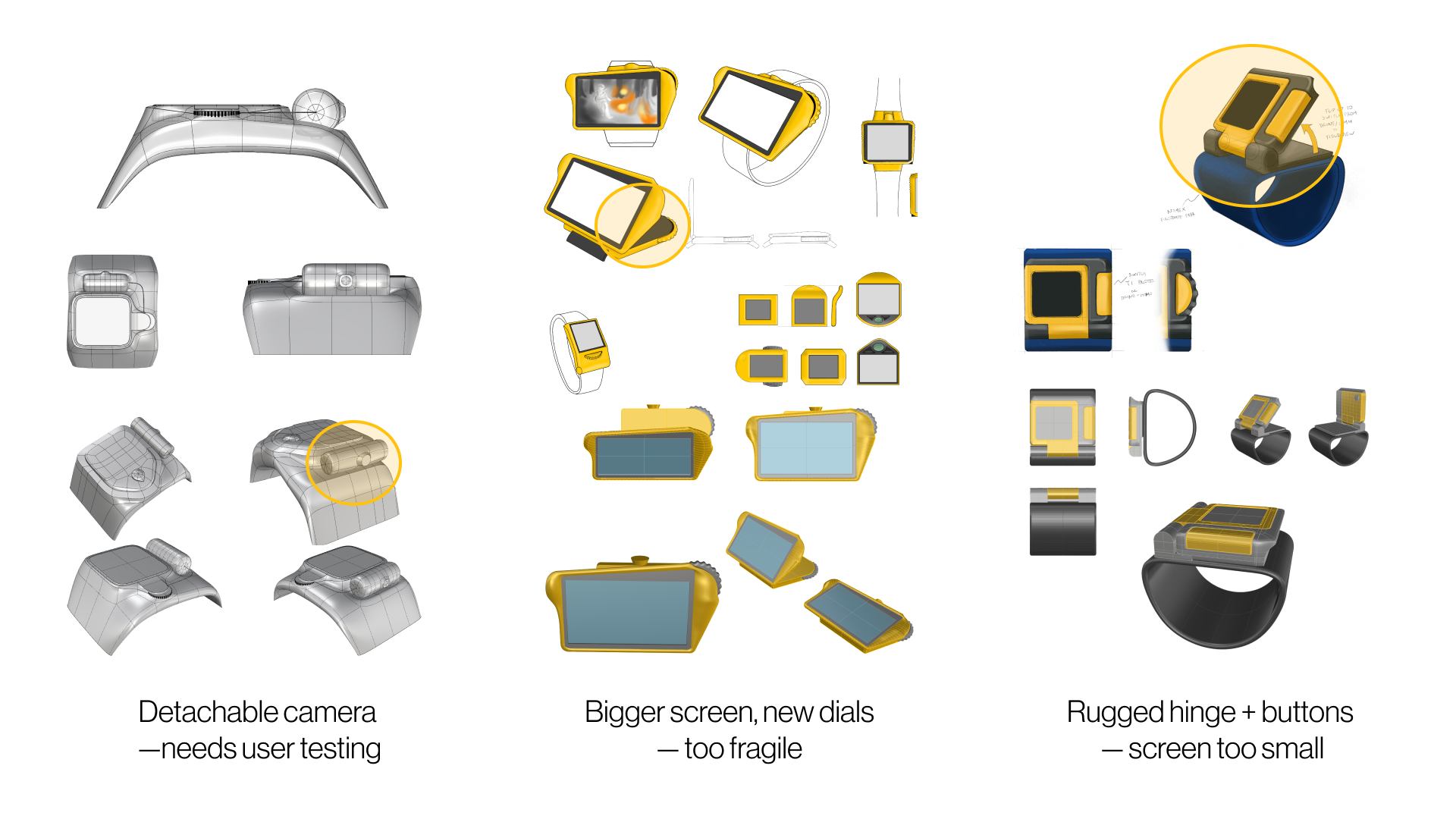
USER SIMULATION

R4 CONCEPTS

FINAL CONCEPT

REFINEMENT
How are we designing this? What does it look like?CAD
*I was responsible for the design and CAD of the main body display and the baseplate
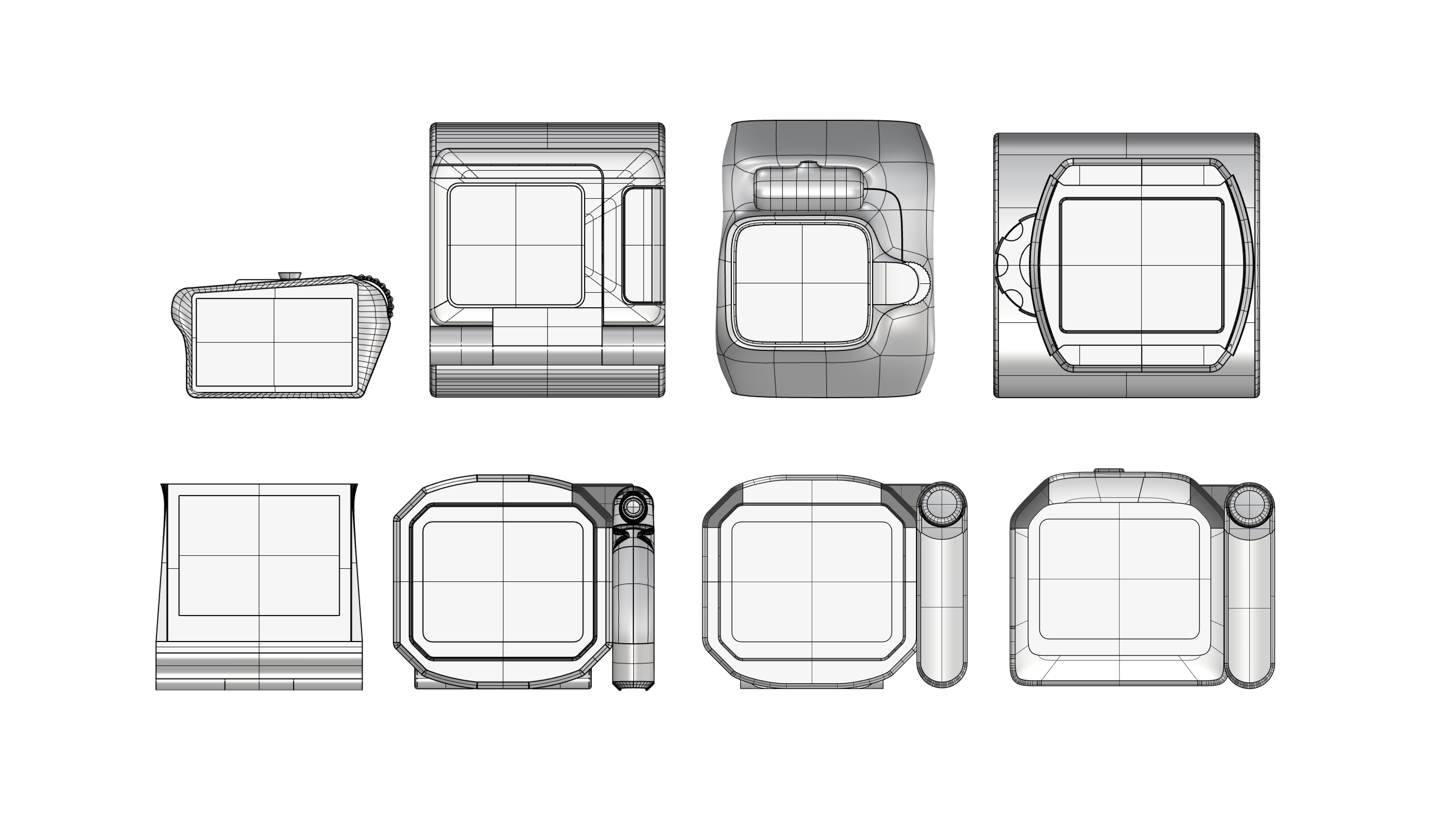

DETAIL EXPLORATION
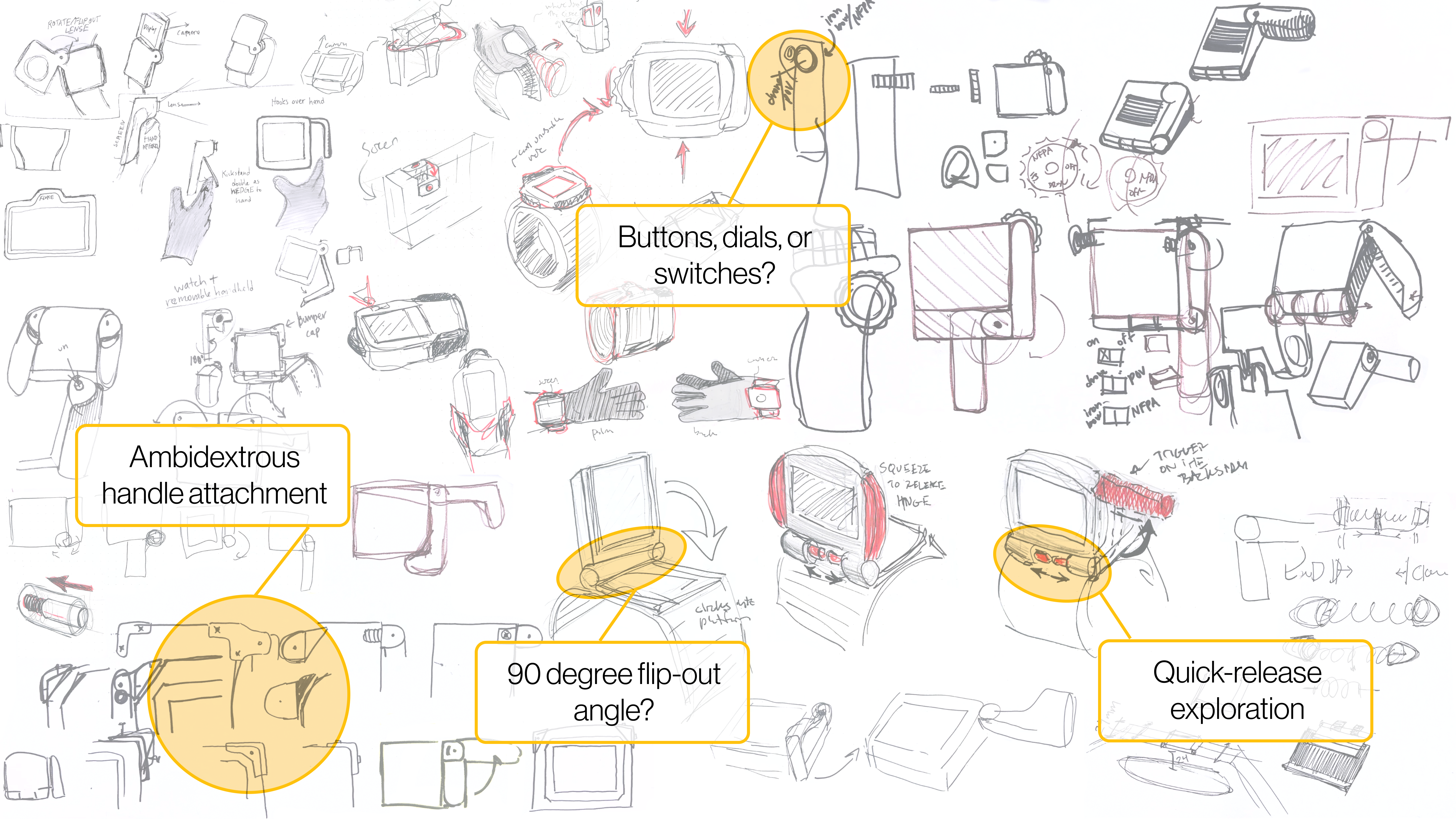
PROTOTYPES

APPLICATION
How does this device work in the real world?UI — COMMAND CENTER
Designed by myself
UI — DEVICE
Designed by Ethan Del Rosario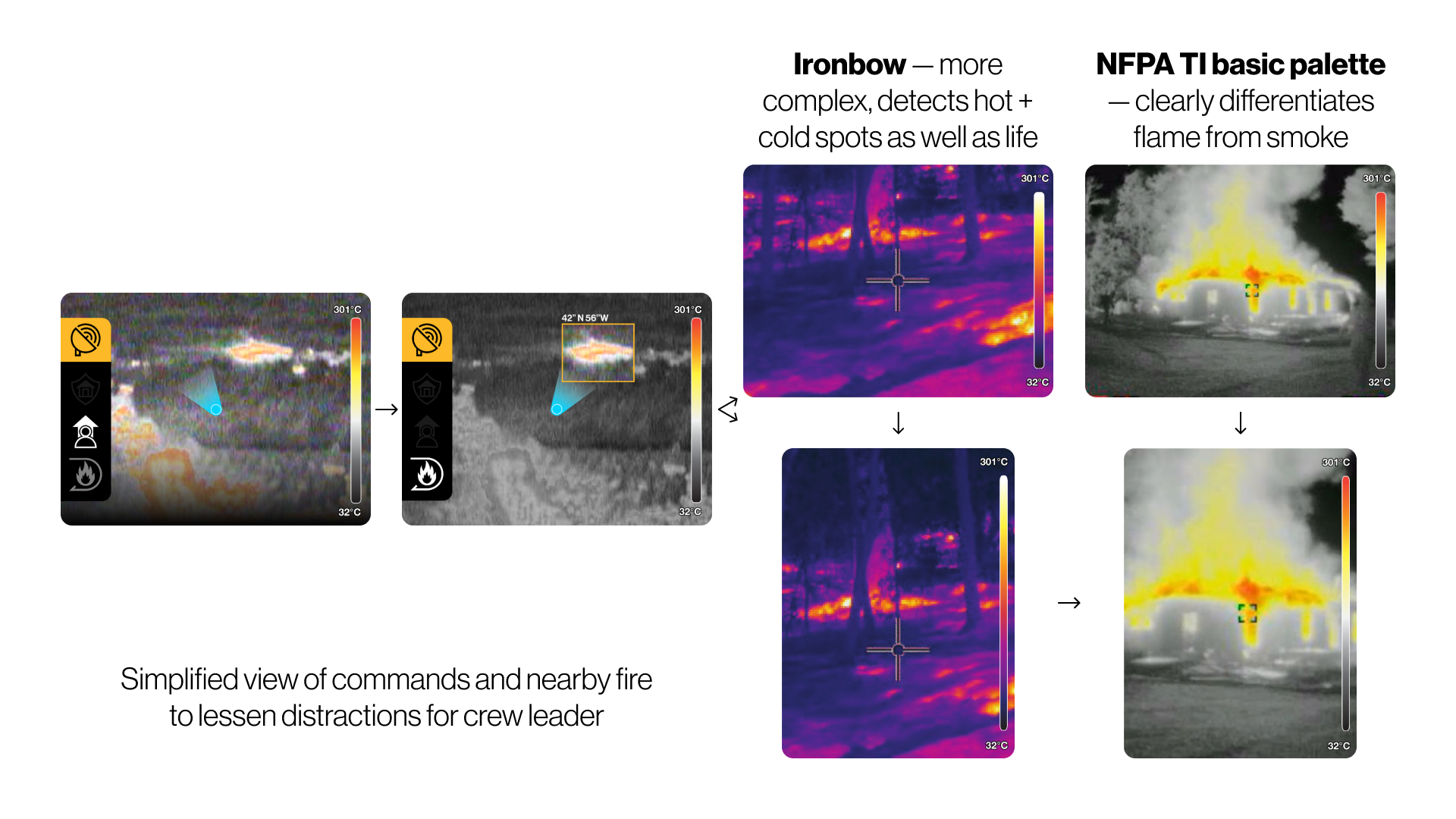
ACTIONS

USER SCENARIO
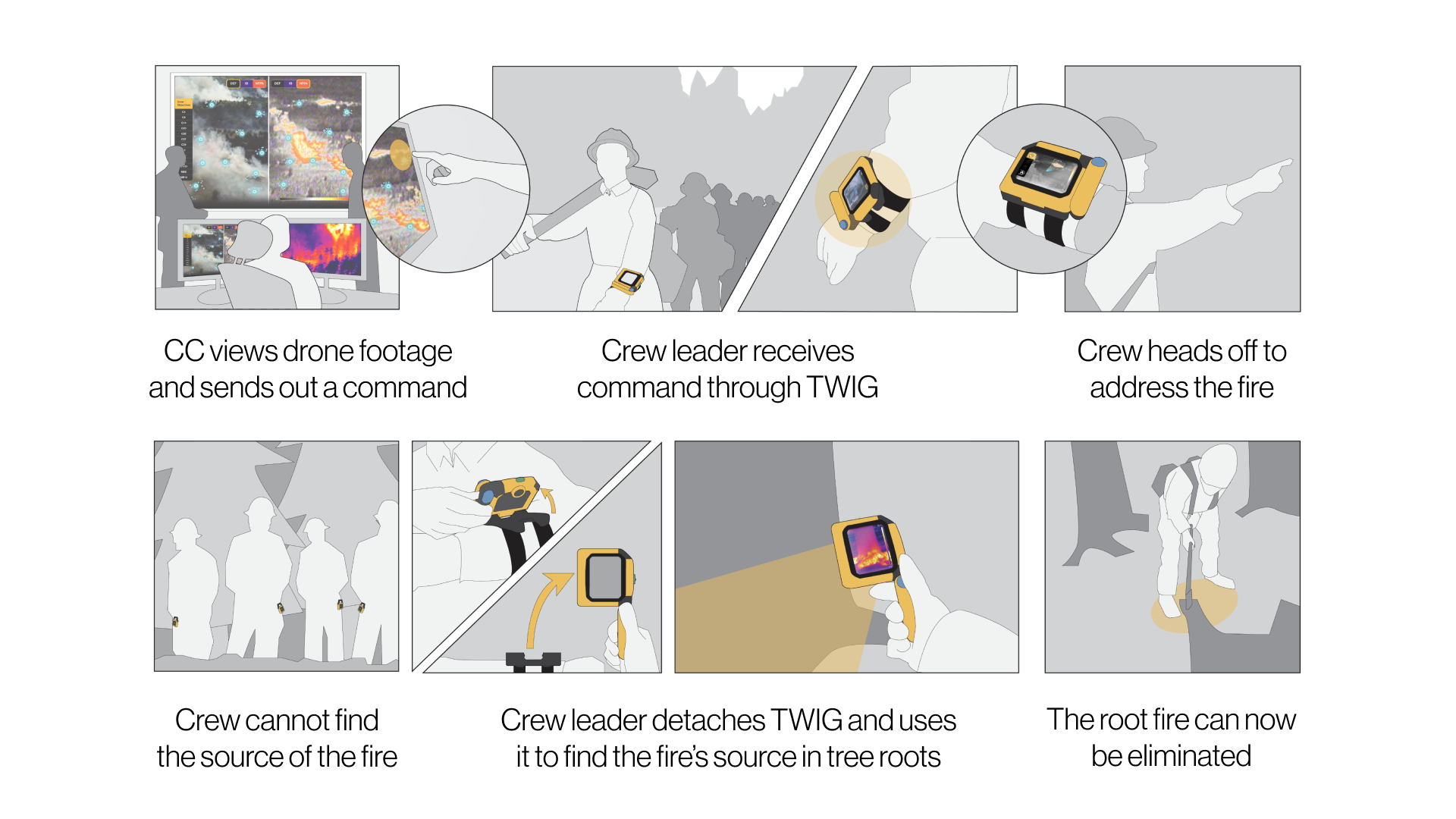
TRACKER + CASE
PARTS

FINAL
FLUKE TWIG
Introducing TWIG: the Thermal Wildfire Imaging Gadget. The flexible device can allow crew leaders to do all aspects of their job —addressing hidden fires, finding cold spots to start fire walls, or finding people in need of rescue through the smoke, and more — quicker, more effectively, with more awareness to keep them alive and well.
The hybrid wearable-handheld design means it can be put away easily whenever it needs to be — an addition, never a distraction. Paired with the improved command center UI and tracking, the operations chief and other strategists can make more informed decisions (and communicate them more effectively) to put out fires faster and keep their crews safe.

FINAL PROTOTYPE

